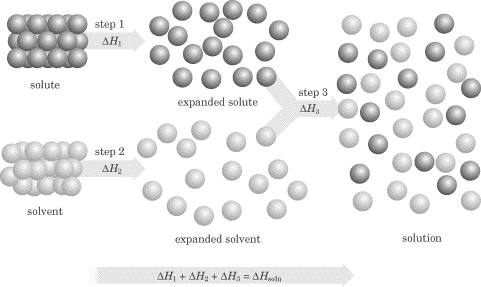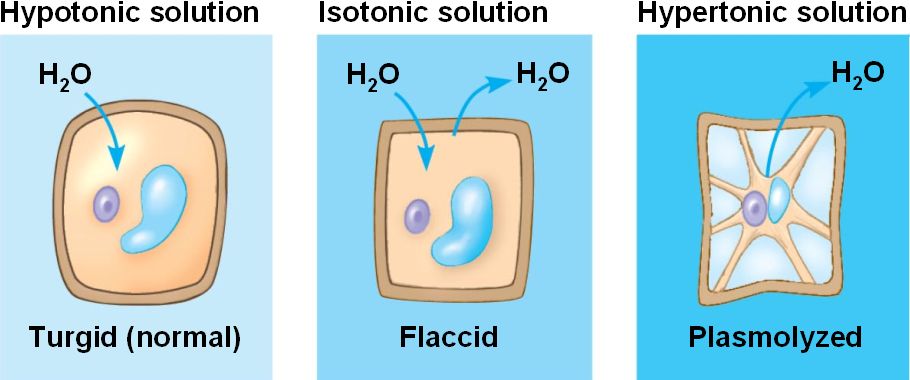Today we are learning about how different strengths of solutions can impact cell homeostasis in plants and animals.
First off, we need to know what a solution is. It is a mixture where a solid (solute), often sugar or salt in biology, is completely dissolved into a liquid (solvent), usually water. The image below models the idea of dissolving a solute in a solvent to make a solution.
Compared to the amounts of water, sugar, and salt inside of a cell, solutions can either be stronger (have more solute), the same, or weaker (have less solute). We have names for these, shown on the diagram below.
These solutions affect osmosis in cells. Water will move into the cell from a hypotonic solution, causing it to get larger. Water will move in and out of a cell in an isotonic solution, so the cell size will be constant. In a hypertonic solution, water will move out of the cell, causing it to shrink. The Amoeba Sisters say it better in pictures:
To maintain homeostasis, an animal cell needs to be surrounded by an isotonic solution. Plants are a little different, though.
Plants NEED to be an a hypotonic solution to be healthy. The cell will swell up with water and it will push against the cell wall. This makes the plant stand upright. This is what healthy plants do. When they run out of water, they wilt.
As always, you can download today's powerpoint here.
You can find the guided notes here.
A completed set of the guided notes are here.
Your homework tonight is to complete the questions and summary spaces in all of your notes for the week and to make flashcards for the following terms:
- Hypertonic
- Hypotonic
- Isotonic
- Active Transport
- Passive Transport
- Diffusion
- Osmosis





No comments:
Post a Comment